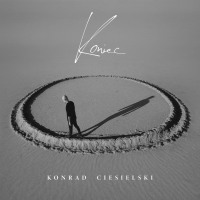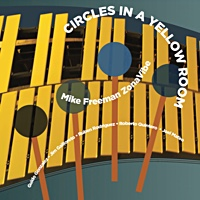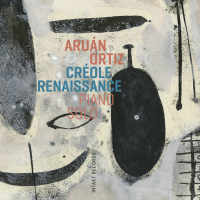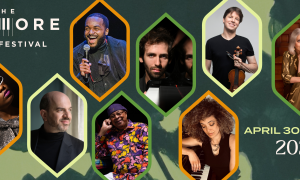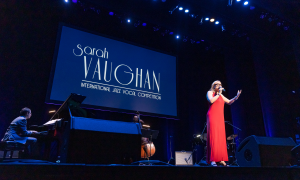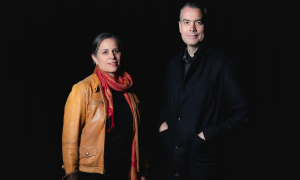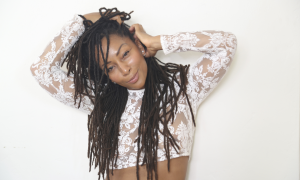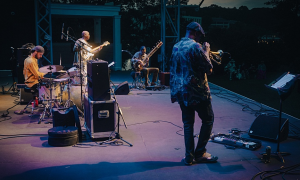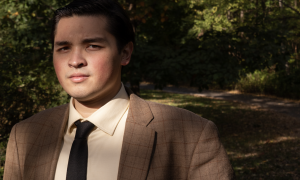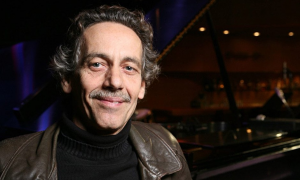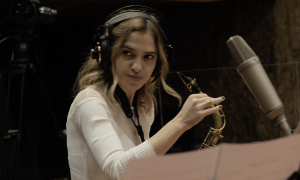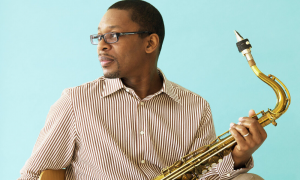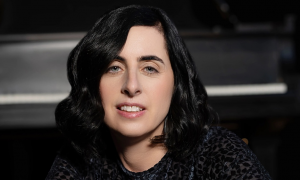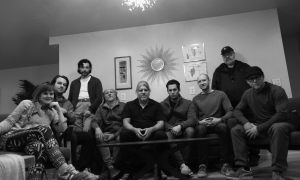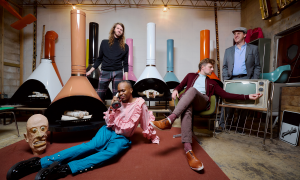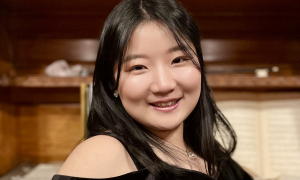Phil Schaap is much more than a Charlie Parker chatterbox. In addition to hosting the most informative and detailed weekday radio show on Parker on WCKR in New York, Phil is a Grammy-winning jazz archivist and record producer, liner-notes writer and educator at Jazz at Lincoln Center in New York.
In celebration of Parker's 90th birthday on August 29 and WKCR's Charlie Parker broadcast special on August 28 and 29, I asked Phil about several major phases of Parker's brief career. Yesterday we discussed the recording of Ko-Ko. Today, we look at Parker's West Coast period from December 1945 to April 1947:
JazzWax tracks: The Lover Man session was recorded on July 29, 1946. The tracks recorded were Max Is Making Wax, Lover Man and The Gypsy. Charlie Parker is clearly in poor physical condition that day at Dial's Hollywood studio. And yet the genius of the artist pushes through, despite the near-tragic events that would take place after the date's conclusion. You can find these tracks on The Complete Savoy & Dial Master Takes at iTunes or here.
JazzWax clip: Here's an ailing Charlie Parker recording Lover Man for Dial in July 1946...
And here's the same track as portrayed in Bird (1988) by Forest Whitaker...
In celebration of Parker's 90th birthday on August 29 and WKCR's Charlie Parker broadcast special on August 28 and 29, I asked Phil about several major phases of Parker's brief career. Yesterday we discussed the recording of Ko-Ko. Today, we look at Parker's West Coast period from December 1945 to April 1947:
JazzWax: Do we know what impact Charlie Parker had on West Coast jazz musicians during his California trip?
Phil Schaap: Parker travels out to Los Angeles in December 1945 with Dizzy Gillespie to play at Billy Berg's club in Hollywood. But when Gillespie and the band return as scheduled in January, Parker remains behind in California. During his months on the scene in 1946, Parker is having the most impact on musicians who are grasping his breakthrough and have access to him displaying it. But that's a relatively small crew. A lot of bebop's popularization is being done outside of what Parker is doing on the West Coast.
JW: For example?
PS: Dizzy Gillespie is continuing to play and gain acclaim on 52nd Street. In addition, Dizzy and his orchestra record for RCA Victor on February 22, 1946. That's a major session Bird would have been on had he returned to New York as planned. The recording occurs only 15 days after Dizzy leaves the West Coast without Parker and with largely the same group that was on the West Coast.
JW: So Parker remaining on the West Coast plays a minor role in the advancement of bebop out there?
PS: For the most part, yes. Bird's stay in Hollywood is eventful in that other musicians out there are exposed to him. But it's not significant, and the period has its own set of ups and downs, ending with Parker's unfortunate downward health spiral, reaching bottom with the Lover Man session for Dial Records in July. During that recording session, he's completely out of it, and when he returns to his hotel room, he sets fire to the curtains, is arrested and ultimately sentenced to spend time at the Camarillo State Mental Hospital.
JW: Have West Coast jazz musicians been translating and adapting what Parker was doing up until that point?
PS: That's tough to say. He's having an influence on some but not on others. So, if you're Howard McGhee, you're already playing bebop and now you're playing it with the music's creator. If you're Willie Smith, your style may be changing a little but probably not at all. If you're Lu Watters, you're not having anything to do with bebop whatsoever. [Photo of Miles Davis and Howard McGhee by William P. Gottlieb]
JW: So Bird is struggling out there in 1946.
PS: That's fair to say. If Bird had been really popular in 1946, he would have had a home, he would have had money and he would have had drugs instead of getting sick. He has none of those things. Remember, in California in 1946, he's largely a sideman.
JW: So it's not until after his release from Camarillo in late January 1947 that he has the most impact.
PS: Right. He's anxious to leave the West Coast after his release at the end of January 1947. He leaves on April 5, so he's there for two months and a week after his release. Bebop during this time is catching on steadily. But very few things in any art happen in 24 hours. Dizzy's career is advancing the music, and other primary bebop players are emerging. The general grappling of this new musical concept is making bebop better known. But its development requires lead time to advance and mature.
JW: So bebop on the West Coast doesn't die out as a result of Bird being off the scene incarcerated in a hospital.
PS: Exactly. In fact, Bird reaps some of the bounty of bebop's development during his absence. He returns to the scene at a time when bebop's inventiveness is more widely recognized. It's not until 1948 and 1949 that Bird becomes truly big. Charlie Parker with Strings, recorded in November 1949, is just the commercial cherry on the sundae. By then he has established himself here and in Europe as the dominant force. Remember, Birdland opens in New York in December 1949. The largest club in New York wouldn't have been named for Parker if he had been a nobody at that point.
JW: Backing up a bit, is much known about Parker's period at Camarillo in 1946-47?
PS: Pianist Joe Albany got busted at about the same time and was there with Bird for a while. But Albany broke out because the facility didn't have tight security where they were housed. Bird actually thought Albany was silly for not using the benefit of the recuperation period. JW: Did Parker practice while at Camarillo?
PS: Psychiatrists thought Bird should not be allowed to play and that working on a gardening detail would be more productive. He wasn't allowed to play until the very end of his stay, when he was on work-release.
JW: He seems to have effortlessly kicked the habit for a while at Camarillo.
PS: At Camarillo, he went cold turkey. He was kept off drugs for a half year in 1946 and early 1947.
JW: Does Gillespie avoid re-teaming with Parker because Parker becomes re-addicted to drugs?
PS: I don't know. I think the reason had more to do with Dizzy's own vision of what he wanted to do at that point with a big band and Bird's way of life. Dizzy could see that Parker wasn't going to change and that he would remain largely unpredictable and irresponsible from an employer's standpoint, which to Dizzy was a liability, despite Bird's musical genius.
JW: How does Bird view his time in Camarillo?
PS: He views it as incarceration. He doesn't really see its proactive element. I think Howard McGhee put it best when he said that the only reason why Parker didn't die in 1946 is because of his stay at Camarillo.
JW: Did anyone ever anyone speak to the doctors there about Parker?
PS: I don't know. I know that Bird's primary doctor committed suicide soon afterward. Psychiatrists were impressed with Parker's talent and intelligence, but by the time he got to them, he was clean in terms of drug use. So he was just another patient they were tasked with trying to help.
JW: Was there a difference in his playing after Camarillo?
PS: I would say so, but it had little to do with the rest or care at the facility. Camarillo definitely recharged his batteries. Had he not been interned there, Lover Man more than likely would have been his last session.
JW: How does he grow musically?
PS: If you're 25 years old and you're a creative genius, you're supposed to grow. One would expect someone at age 26 to be better than they were at age 25. Camarillo protected Parker from himself and let him recharge. It's a convalescence and an essential one to his existence. [Photo of Charlie Parker and Miles Davis by William P. Gottlieb]
JW: What was the reason for his frying out during the Lover Man session?
PS: I did a lot of research on this. Doris Parker, Bird's wife at the time, insisted he had a nervous breakdown and was clinically depressed. Based on the drug use and need for psychiatric care, Bird clearly was unhappy, and the emotional setback at the Lover Man session was devastating. Whatever Parker suffered from, it wasn't easily fixed by a drug-withdrawal regimen or gardening program. While this experience cleans him up, it doesn't resolve whatever long-term mental issues he was facing. [Photo: Charlie Parker, producer Ross Russell, Earl Coleman and Shifty Henry at a post-Camarillo session for Dial in February 1947]
JazzWax tracks: The Lover Man session was recorded on July 29, 1946. The tracks recorded were Max Is Making Wax, Lover Man and The Gypsy. Charlie Parker is clearly in poor physical condition that day at Dial's Hollywood studio. And yet the genius of the artist pushes through, despite the near-tragic events that would take place after the date's conclusion. You can find these tracks on The Complete Savoy & Dial Master Takes at iTunes or here.
JazzWax clip: Here's an ailing Charlie Parker recording Lover Man for Dial in July 1946...
And here's the same track as portrayed in Bird (1988) by Forest Whitaker...
This story appears courtesy of JazzWax by Marc Myers.
Copyright © 2025. All rights reserved.










